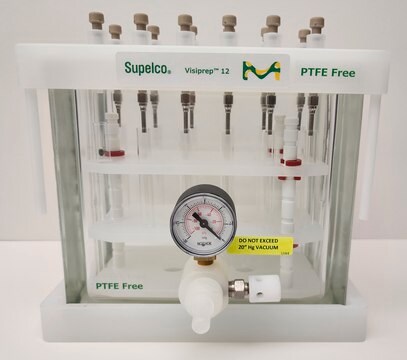86893
Tetrabutylammonium perchlorate
for electrochemical analysis, ≥99.0%
About This Item
Productos recomendados
grado
for electrochemical analysis
Nivel de calidad
Análisis
≥99.0% (T)
≥99.0%
formulario
powder
mp
211-215 °C
solubilidad
acetonitrile: 0.1 g/mL, clear, colorless
cadena SMILES
[O-]Cl(=O)(=O)=O.CCCC[N+](CCCC)(CCCC)CCCC
InChI
1S/C16H36N.ClHO4/c1-5-9-13-17(14-10-6-2,15-11-7-3)16-12-8-4;2-1(3,4)5/h5-16H2,1-4H3;(H,2,3,4,5)/q+1;/p-1
Clave InChI
KBLZDCFTQSIIOH-UHFFFAOYSA-M
¿Está buscando productos similares? Visita Guía de comparación de productos
Categorías relacionadas
Descripción general
Aplicación
Palabra de señalización
Danger
Frases de peligro
Consejos de prudencia
Clasificaciones de peligro
Eye Irrit. 2 - Ox. Sol. 2 - Skin Irrit. 2 - STOT SE 3
Órganos de actuación
Respiratory system
Código de clase de almacenamiento
5.1B - Oxidizing hazardous materials
Clase de riesgo para el agua (WGK)
WGK 3
Punto de inflamabilidad (°F)
Not applicable
Punto de inflamabilidad (°C)
Not applicable
Equipo de protección personal
Eyeshields, Gloves, type P3 (EN 143) respirator cartridges
Choose from one of the most recent versions:
¿Ya tiene este producto?
Encuentre la documentación para los productos que ha comprado recientemente en la Biblioteca de documentos.
Los clientes también vieron
Nuestro equipo de científicos tiene experiencia en todas las áreas de investigación: Ciencias de la vida, Ciencia de los materiales, Síntesis química, Cromatografía, Analítica y muchas otras.
Póngase en contacto con el Servicio técnico










